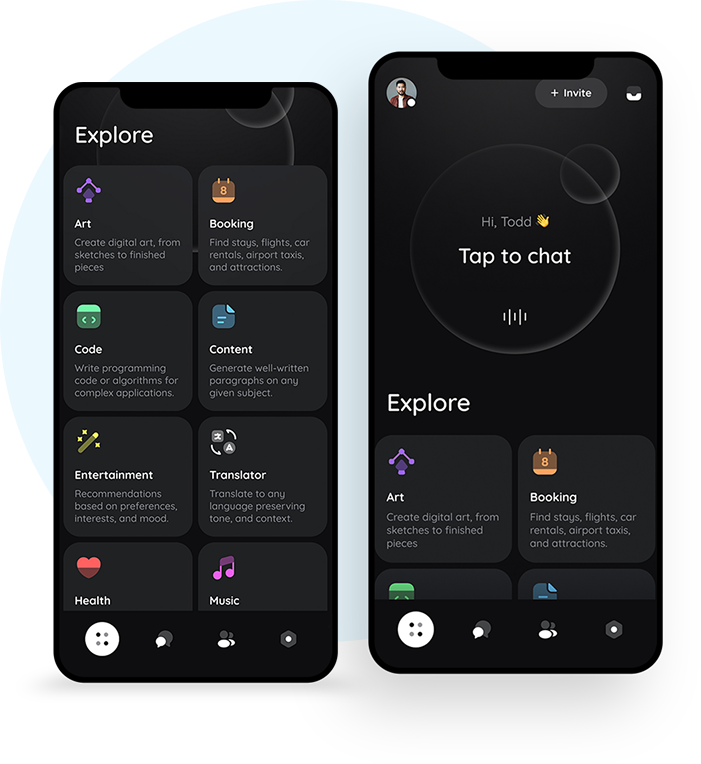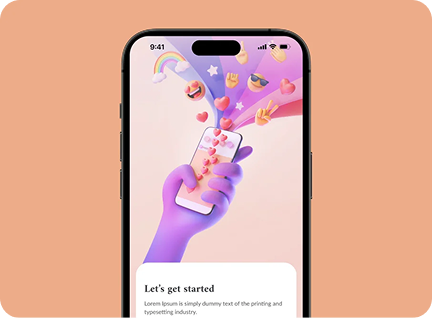Building a successful e-commerce app requires much more than simply creating a digital version of a physical store. Today’s mobile commerce apps must deliver experiences that are intuitive, secure, and engaging while providing business owners with the tools they need to manage operations efficiently. The features you include can make the difference between an app that drives sales and one that frustrates users into abandoning their shopping carts.
Essential user experience foundations
The foundation of any successful e-commerce app starts with seamless user registration and authentication. Users should be able to create accounts quickly using social media credentials, email addresses, or phone numbers. Guest checkout options are crucial because many users want to make purchases without creating accounts, especially for their first transaction.
Your registration process should collect only essential information initially. Asking for too much information upfront increases abandonment rates. You can always collect additional details later as users become more engaged with your app. Two-factor authentication should be available for users who want extra security, but it shouldn’t be mandatory for casual shoppers.
Product discovery needs to be effortless and enjoyable. Your search functionality should be intelligent enough to handle misspellings, synonyms, and natural language queries. Users should be able to find products through multiple methods: text search, voice search, barcode scanning, and visual search using photos.
Category navigation should be logical and not require more than three taps to reach any product. Filter and sorting options need to be comprehensive but not overwhelming. Essential filters include price range, brand, ratings, availability, and product-specific attributes like size, color, or material.
Product pages are where conversion decisions happen, so they need to be comprehensive and compelling. High-quality images with zoom functionality are non-negotiable. Multiple angles, lifestyle shots, and size comparison images help users make confident purchasing decisions. Video demonstrations are increasingly important for complex products.
Product descriptions should answer common questions and highlight key benefits. Include detailed specifications, care instructions, compatibility information, and anything else that helps users make informed decisions. User-generated content like reviews and Q&A sections provide social proof and address concerns from real customer perspectives.
Stock level indicators help manage customer expectations. Show exact quantities for low-stock items and estimated restock dates for out-of-stock products. Nothing frustrates customers more than discovering their desired item is unavailable after they’ve invested time in shopping.
Creating a frictionless checkout experience
Your shopping cart should be persistent across devices and sessions. If users start shopping on their phone during lunch and finish on their laptop at home, everything should be exactly where they left it. The cart should be easily accessible from any screen in your app.
Quantity modification should be simple with plus/minus buttons and direct number input. Users should be able to save items for later, move items to wish lists, and easily remove unwanted products. The cart should automatically calculate taxes, shipping costs, and discounts as users shop.
The checkout process is where you either complete sales or lose customers to abandonment. Keep the process as short as possible while collecting necessary information. Progress indicators help users understand how much more information they need to provide.
Multiple payment options accommodate different user preferences and geographic requirements. Credit and debit cards are essential, but digital wallets like Apple Pay, Google Pay, and PayPal often have higher conversion rates because they reduce typing requirements. Buy-now-pay-later options like Klarna, Afterpay, and Affirm appeal to budget-conscious shoppers.
Address management should support multiple shipping and billing addresses. Auto-complete functionality speeds up address entry and reduces errors. Integration with address validation services prevents shipping delays caused by incorrect addresses.
Security indicators build trust during checkout. Display security badges, SSL certificates, and payment processor logos prominently. Explain how customer data is protected and what security measures are in place. Transparency about security reduces anxiety and increases conversion rates.
Order confirmation should be immediate and comprehensive. Send confirmation emails and push notifications with order details, expected delivery dates, and tracking information. Include clear instructions for returns or exchanges and customer service contact information.
Building customer engagement and retention
Push notifications are powerful tools for engagement when used thoughtfully. Personalized notifications about sales on viewed items, restocked products, and abandoned cart reminders can significantly increase sales. However, generic promotional messages often lead to app uninstalls.
Timing matters greatly with notifications. Analyze user behavior to determine optimal sending times for different types of messages. Respect user preferences about notification frequency and types. Always provide easy opt-out options to prevent users from disabling all notifications or uninstalling your app.
Personalization engines that learn from user behavior create more relevant shopping experiences. Show products based on browsing history, previous purchases, and similar customer preferences. Personalized home screens, targeted promotions, and customized product recommendations increase engagement and sales.
Loyalty programs encourage repeat purchases and increase customer lifetime value. Points-based systems, tier-based benefits, and exclusive member pricing make customers feel valued. Make it easy to earn and redeem rewards without complicated rules or restrictions.
Wish lists and favorites allow users to save interesting products for future consideration. These features provide valuable data about user preferences and create opportunities for targeted marketing when items go on sale or come back in stock.
Social features like sharing capabilities, user reviews, and social media integration help spread awareness of your products and brand. When users share products with friends or post about purchases on social media, they provide authentic marketing that’s more trusted than traditional advertising.
Administrative and business management features
Real-time inventory management prevents overselling and ensures accurate stock information across all sales channels. Your system should automatically update inventory levels when sales occur and provide low-stock alerts to help with reordering decisions.
Order management workflows should handle the complete order lifecycle from placement to delivery. This includes order processing, fulfillment coordination, shipping integration, and post-delivery follow-up. Automated status updates keep customers informed without requiring manual intervention.
Analytics and reporting capabilities provide insights into sales performance, customer behavior, and operational efficiency. Track metrics like conversion rates, average order values, popular products, and customer acquisition costs. Use this data to optimize your app and make informed business decisions.
Customer service integration allows users to get help when they need it. Live chat, help desk integration, and comprehensive FAQ sections reduce support burden while improving customer satisfaction. Make it easy for users to contact support with order issues or product questions.
Return and refund management should be streamlined for both customers and administrators. Clear return policies, easy return initiation, and transparent refund processing build trust and encourage purchases from hesitant customers.
Advanced features for competitive advantage
Augmented reality capabilities let customers visualize products in their own environment before purchasing. This is particularly valuable for furniture, home decor, and fashion items. AR reduces return rates and increases customer confidence in purchasing decisions.
Artificial intelligence powers recommendation engines, chatbots, and predictive analytics. AI can suggest products users might like, answer common questions, and predict demand patterns to optimize inventory management.
Voice commerce capabilities allow users to search for products, add items to carts, and complete purchases using voice commands. As smart speakers become more common, voice integration provides competitive advantages.
Subscription and recurring order management appeals to customers who regularly purchase the same products. Automated reordering, flexible delivery schedules, and easy subscription management increase customer lifetime value and provide predictable revenue.
Multi-vendor marketplace functionality allows you to expand product selection without managing inventory. Third-party sellers can list products while you maintain control over the customer experience and take commission on sales.
Geo-location features enable location-based promotions, store locators, and local inventory checks. Customers can find nearby stores, check in-store availability, and receive location-specific offers.
Technical performance and security considerations
App performance directly impacts conversion rates and user satisfaction. Slow loading times, especially on product pages and during checkout, cause immediate user abandonment. Optimize images, use content delivery networks, and implement efficient caching strategies.
Offline functionality allows users to browse previously viewed products and manage their accounts even without internet connectivity. When connectivity returns, the app should sync any changes made offline.
Cross-platform compatibility ensures consistent experiences across different devices and operating systems. Your app should work equally well on older and newer devices, though you might offer enhanced features for devices with advanced capabilities.
Security measures protect both customer data and your business. Implement proper encryption for all sensitive data, use secure payment processing, and follow industry best practices for data protection. Regular security audits help identify and address potential vulnerabilities.
Scalability planning ensures your app can handle traffic spikes during sales events, holiday shopping, or viral marketing campaigns. Cloud infrastructure and auto-scaling capabilities prevent crashes during high-demand periods.
Search engine optimization for mobile apps helps improve discoverability in app stores. Optimize your app listing with relevant keywords, compelling descriptions, and attractive screenshots that accurately represent your app’s functionality.
The most successful e-commerce apps balance comprehensive functionality with intuitive user experience. They provide value to both customers and business owners while maintaining the performance and security standards that modern mobile commerce demands.
Quality Assurance & Continuous Improvement
Quality is at the core of every build. Each version undergoes both manual and automated testing to detect bugs, ensure device compatibility, and improve user experience. Post-launch, we monitor performance and offer full-cycle support for upgrades and scaling.
Conclusion: We Build Apps That Deliver
If you’re looking for a partner who treats your app like their own, with a proven development process, real collaboration, and technical precision — Software Orbits is ready to build with you.
📞 Contact us today to schedule a consultation.


